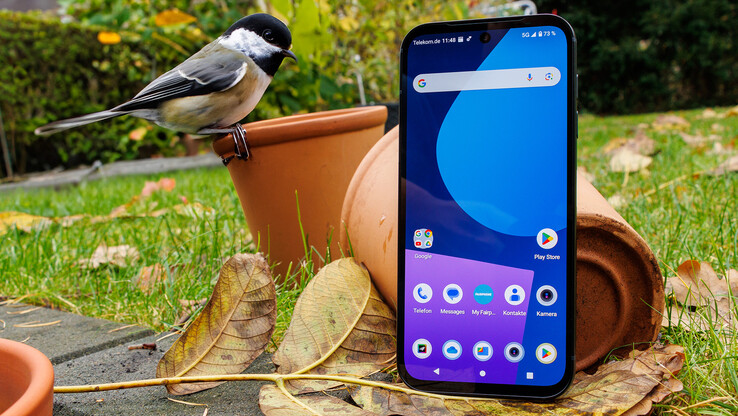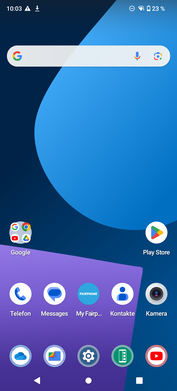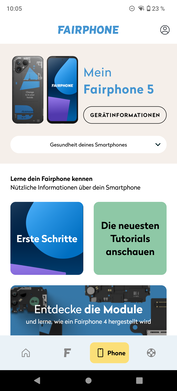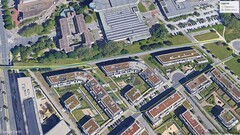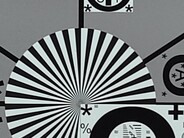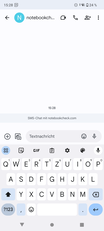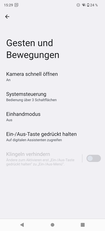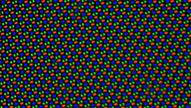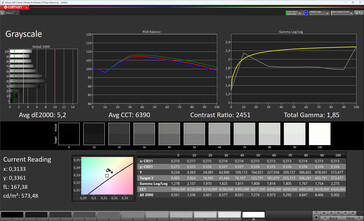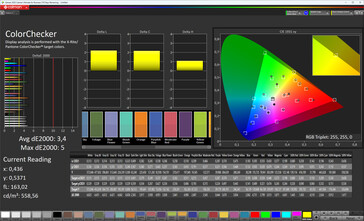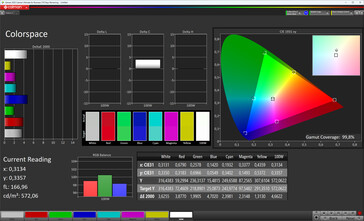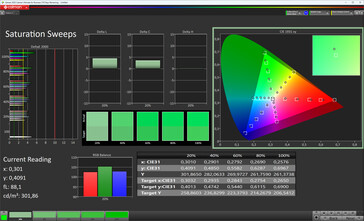Fairphone 5 review - Sustainable smartphone with 8 years of updates and 5 years of warranty ↺
The Fairphone 5 is the successor of the Fairphone 4. The predecessor of our test handset performed admirably in the test, presenting itself as a well-rounded mid-range smartphone.
The Dutch business takes it a step further with the Fairphone 5, focusing on a higher degree of modulation, fairer trade, and more recycled components. All of this is designed to make the Fairphone 5 the world's fairest and most sustainable smartphone. This is emphasized by the extensive five-year warranty and eight-year upgrade cycle.
It is more pricey at ~US$750, but it also has more technology to offer. Read on to find out how the Fairphone 5 performs in everyday situations.
Potential Competitors in Comparison
Rating | Date | Model | Weight | Drive | Size | Resolution | Price |
|---|---|---|---|---|---|---|---|
| 83.2 % v7 (old) | 11 / 2023 | Fairphone 5 QCM6490, Adreno 643 | 212 g | 256 GB UFS 2.2 Flash | 6.46" | 2700x1224 | |
| 88.9 % v7 (old) | 11 / 2023 | Google Pixel 8 Tensor G3, Mali-G715 MP7 | 187 g | 128 GB UFS 3.1 Flash | 6.20" | 2400x1080 | |
| 90.5 % v7 (old) | 03 / 2023 | Samsung Galaxy S23 SD 8 Gen 2 for Galaxy, Adreno 740 | 167 g | 128 GB UFS 3.1 Flash | 6.10" | 2340x1080 | |
| 78.3 % v7 (old) | 08 / 2023 | Nokia G42 SD 480+, Adreno 619 | 194 g | 128 GB UFS 2.2 Flash | 6.56" | 1612x720 |
Case - Recycled plastic, nostalgia and Gorilla Glass
With a display-to-surface ratio of 83%, the Fairphone 5 may not exude a super-modern impression, but it boasts a clean and attractively finished design. The matte aluminum frame is resistant to fingerprints, and the smartphone comes in matte black, sky blue, and transparent options. The transparent variant was used for our test device.
The Fairphone 5 has shed some weight, and its clipped-on back adds a touch of nostalgia. The back is secured by 18 small plastic teeth that require effort to release and care to relock. Underneath the cover lies the replaceable battery, easily accessible after removal. Only then can you reach the nano-SIM and microSD slots, both equipped with an eject mechanism.
When it comes to material selection, the Fairphone 5 places a strong emphasis on recycled materials. Notably, 94% of the aluminum, 82% of the magnesium, 77% of the indium, and 69% of the plastic in the Fairphone 5 are derived from recycled sources. Tin, copper, nickel, and rare earths are also sourced from recycled materials in comparatively high proportions. The origin of raw materials is another critical factor. The Fairphone 5 employs fairly mined raw materials (gold: 100%, cobalt: 100%, silver: 100%, lithium: 99%, tungsten: 99%) from non-crisis regions. Suppliers must adhere to standards for safe and humane working conditions (SA8000 and ISO45001), and the smartphone's manufacturing process utilizes 100% renewable energy.
For users interested in further disassembly, the process is straightforward with Phillips screws that require no glue. The twelve silver-colored screws grant access to the USB port, speakers, camera, and card slots. The eight black screws secure the front, requiring loosening for tasks like changing the display or front camera. This design allows many users to perform common repairs themselves, promoting repairability. It's worth noting that the smartphone is not waterproof. Nonetheless, it is protected against the ingress of damaging amounts of dust and water jets from any angle in accordance with IP55.
Connectivity - USB 3.2 with microSD support
The Fairphone 5 boasts standard features. The USB 3.2 port (Gen. 1) operates at up to 5 GBit/s, although it shows slower performance in the copy test (139.55 MB/s). While supporting OTG, the smartphone also facilitates wired image output, albeit limited to screen mirroring. Users connecting external drives to the smartphone should ensure proper formatting, as the USB port does not recognize exFAT or NTFS.
The phone also does not have a UWB chip, wireless charging or a dedicated security chip.
microSD card reader
It's noteworthy that a microSD card slot has been integrated at all, setting an exemplary standard. While its performance is impressive in the cross-platform disk test, transfer rates fall below average in the copy test. Unlike the USB port, the microSD card slot supports the exFAT file system.
| SD Card Reader - average JPG Copy Test (av. of 3 runs) | |
| Samsung Galaxy A54 5G (Angelbird AV Pro V60) | |
| Nokia G42 (Angelbird V60) | |
| Fairphone 5 (Angelbird AV Pro V60) | |
| Sony Xperia 10 V (Angelbird AV Pro V60) | |
Cross Platform Disk Test (CPDT)
Software - Longest update guarantee for the Fairphone 5
The Fairphone 5 comes with Google Android 13 and is expected to receive security patches and five major updates for at least eight years. Android 18 can, therefore, be anticipated.
In addition to the Google apps, there is only the My Fairphone app on the smartphone, which collects rudimentary information on the technical status and provides direct access to support.
Communication and GNSS - Good tracking and 6 GHz WLAN
Wi-Fi 6E is available for home Wi-Fi, which also includes the use of the 6 GHz band. In combination with our reference router Asus ROG Rapture GT-AXE11000, the Fairphone 5 not only achieves high but also largely stable transmission rates.
The Fairphone accesses the data network via 5G Sub5 at best and offers extremely broad frequency support. The reception characteristics are good in a metropolitan environment, and the data rates are also at the expected level.
| Networking | |
| Fairphone 5 | |
| iperf3 receive AXE11000 | |
| iperf3 transmit AXE11000 | |
| iperf3 transmit AXE11000 6GHz | |
| iperf3 receive AXE11000 6GHz | |
| Google Pixel 8 | |
| iperf3 receive AXE11000 | |
| iperf3 transmit AXE11000 | |
| iperf3 transmit AXE11000 6GHz | |
| iperf3 receive AXE11000 6GHz | |
| Samsung Galaxy S23 | |
| iperf3 receive AXE11000 | |
| iperf3 transmit AXE11000 | |
| iperf3 transmit AXE11000 6GHz | |
| iperf3 receive AXE11000 6GHz | |
| Nokia G42 | |
| iperf3 receive AXE11000 | |
| iperf3 transmit AXE11000 | |
| Fairphone 4 | |
| iperf3 transmit AX12 | |
| iperf3 receive AX12 | |
| Average of class Smartphone | |
| iperf3 receive AXE11000 | |
| iperf3 transmit AXE11000 | |
| iperf3 transmit AXE11000 6GHz | |
| iperf3 receive AXE11000 6GHz | |
Tracking is very fast and precise outdoors, while indoors, it takes much longer, especially until the Fairphone 5 has settled on the exact position. However, once settled, it is very accurate.
These characteristics are also noticeable on our short test drive, as the smartphone accurately records the route traveled in direct comparison with a Garmin Venu 2.
Phone features and voice quality
The Fairphone 5 has good voice quality when held to the ear and reliably filters out minor background noise. If it gets loud in the surroundings, the noise canceling reaches its limits, muffles the speaker's voice considerably, and allows background noise to penetrate again and again. The speaker mode works properly and is only accompanied by a slight reverberation effect.
The Fairphone has space for a physical nano-SIM and can also be fitted with an eSIM as an alternative to enable dual-SIM operation. Functions such as VoLTE and Wi-Fi calls are supported.
Cameras - Good dual cam with ToF in the Fairphone 5
The front camera of the Fairphone 5 has a generous 50 MP, but uses pixel binning, resulting in final images with only 12.5 MP. The picture quality is okay, but the images are heavily oversharpened during the day and are somewhat low-contrast in low light.
The two lenses on the back also work with 50 MP each, but they are different sensors. The main lens comes from Sony and has optical image stabilization. It produces quite respectable photos, even if the images should have more dynamic range. Although the ultra-wide-angle lens shows noise quite early on, it also has a stable imaging performance in the peripheral areas and a high level of detail due to its high resolution. The lens can also be used for macro subjects, but these are heavily vignetted. Zooming is not a strength of the Fairphone.
The Fairphone 5 records videos on both sides in Ultra HD with 30 FPS at best. Alternatively, 60 FPS is also available for Full HD (or HD). Unfortunately, only a 16:9 format is provided, and the frame rate of 24 FPS is also not available.
Image comparison
Choose a scene and navigate within the first image. One click changes the position on touchscreens. One click on the zoomed-in image opens the original in a new window. The first image shows the scaled photograph of the test device.
HauptkameraHauptkameraUltraweitwinkel5-facher ZoomLow-Light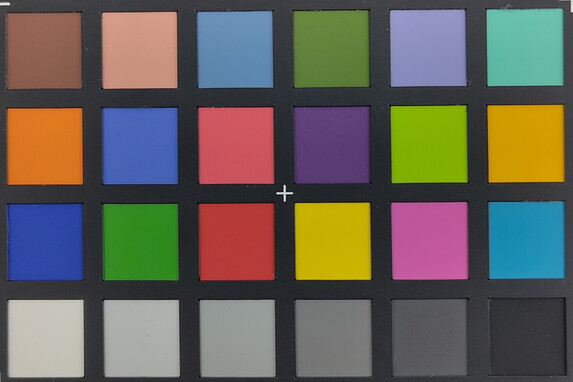

Accessories and Warranty - Five years with registration
Registering the Fairphone 5 free of charge extends the smartphone's warranty from 24 months to a generous five years - a unique feature in the smartphone universe.
The box remains empty except for the smartphone; even a charging cable is missing. The makers justify this by saying that most people already own the most necessary accessories. Protective covers (~US$43 each) and a screen protector (~US$36) are offered as options. Spare parts can also be purchased in the store, which users can change themselves.
Input devices & Operation - Fairphone 5 with up to 300 Hz
The capacitive touchscreen of the Fairphone 5 works with a comparatively high sampling rate of 300 Hz, has good gliding properties, and responds reliably.
Biometric security is ensured by a fingerprint sensor in the frame or in the power button. This delivers good recognition rates and unlocks the smartphone quickly. Facial recognition via the front camera is noticeably faster, but it is also less secure.
The linear vibration motor provides precise and appealing haptic feedback and is audible but not too loud.
Display - 90-Hz OLED with DC dimming
The 6.49-inch OLED display of the Fairphone 5 has a high pixel density and displays content crisply. The manufacturer specifies a brightness of up to 800 cd/m², but we did not achieve this in the test, instead averaging 617 cd/m² with a pure white display, regardless of whether the ambient light sensor is active or not. The peak value also remains at a similar level in the APL18 measurement; we can only measure up to 721 cd/m² when displaying HDR content.
The display flickers at a constant 90 Hz at minimum brightness; the frequency doubles when it gets a little brighter. However, the periods are very even, which is why the risk of complaints is low, but we cannot rule them out. The optional DC dimming mode has no recognizable or measurable effects, except that the panel becomes slightly darker. In fact, the DC dimming seems to be permanently active.
| |||||||||||||||||||||||||
Brightness Distribution: 97 %
Center on Battery: 620 cd/m²
Contrast: ∞:1 (Black: 0 cd/m²)
ΔE ColorChecker Calman: 3.4 | ∀{0.5-29.43 Ø4.77}
ΔE Greyscale Calman: 5.2 | ∀{0.09-98 Ø5}
99.8% sRGB (Calman 2D)
Gamma: 1.85
CCT: 6390 K
| Fairphone 5 OLED, 2700x1224, 6.5" | Google Pixel 8 OLED, 2400x1080, 6.2" | Samsung Galaxy S23 Dynamic AMOLED 2x, 2340x1080, 6.1" | Nokia G42 IPS, 1612x720, 6.6" | Fairphone 4 IPS, 2340x1080, 6.3" | |
|---|---|---|---|---|---|
| Screen | 67% | 35% | -40% | -2% | |
| Brightness middle (cd/m²) | 620 | 1450 134% | 1125 81% | 495 -20% | 513 -17% |
| Brightness (cd/m²) | 617 | 1410 129% | 1122 82% | 452 -27% | 492 -20% |
| Brightness Distribution (%) | 97 | 92 -5% | 96 -1% | 84 -13% | 88 -9% |
| Black Level * (cd/m²) | 0.5 | 0.54 | |||
| Colorchecker dE 2000 * | 3.4 | 1.1 68% | 3.2 6% | 6.09 -79% | 2.96 13% |
| Colorchecker dE 2000 max. * | 5 | 4.2 16% | 4.9 2% | 9.35 -87% | 5.55 -11% |
| Greyscale dE 2000 * | 5.2 | 2.1 60% | 3.3 37% | 5.8 -12% | 3.6 31% |
| Gamma | 1.85 119% | 2.24 98% | 1.97 112% | 2.325 95% | 2.321 95% |
| CCT | 6390 102% | 6584 99% | 6504 100% | 8169 80% | 6032 108% |
| Contrast (:1) | 990 | 950 |
* ... smaller is better
Screen Flickering / PWM (Pulse-Width Modulation)
| Screen flickering / PWM detected | 90 Hz | ||
The display backlight flickers at 90 Hz (worst case, e.g., utilizing PWM) . The frequency of 90 Hz is very low, so the flickering may cause eyestrain and headaches after extended use. In comparison: 53 % of all tested devices do not use PWM to dim the display. If PWM was detected, an average of 8083 (minimum: 5 - maximum: 343500) Hz was measured. | |||
Measurement series with fixed zoom level and different brightness settings
We achieve the best color representation when we select the Advanced color mode with the AMOLED settings and adjust the color temperature (see screenshot above). The Fairphone 5 then uses the larger DCI-P3 color space, but shows a green cast in the grayscale.
Display Response Times
| ↔ Response Time Black to White | ||
|---|---|---|
| 1.65 ms ... rise ↗ and fall ↘ combined | ↗ 0.884 ms rise | |
| ↘ 0.7695 ms fall | ||
| The screen shows very fast response rates in our tests and should be very well suited for fast-paced gaming. In comparison, all tested devices range from 0.1 (minimum) to 240 (maximum) ms. » 9 % of all devices are better. This means that the measured response time is better than the average of all tested devices (20.2 ms). | ||
| ↔ Response Time 50% Grey to 80% Grey | ||
| 10.92 ms ... rise ↗ and fall ↘ combined | ↗ 0.547 ms rise | |
| ↘ 10.37 ms fall | ||
| The screen shows good response rates in our tests, but may be too slow for competitive gamers. In comparison, all tested devices range from 0.165 (minimum) to 636 (maximum) ms. » 23 % of all devices are better. This means that the measured response time is better than the average of all tested devices (31.6 ms). | ||
Performance - Fairphone 5 with extended-life SoC
The Fairphone 5 relies on an unusual solution for its SoC: the Qualcomm QCM6490. This chipset was actually developed for use in IoT products and is closely related to the Snapdragon 778G. The advantage of the QCM6490 is that it is an extended-life SoC and is therefore supplied with updates by Qualcomm for a longer period, making the long update cycles for the Fairphone's operating system possible.
However, the SoC (launched in 2021) is not completely brand new, it is in the upper mid-range, and has 8 GB of LPDDR4x RAM. As things stand today, this is enough power for a smartphone to handle all everyday tasks effortlessly, but the integrated Adreno 643 already means having to make compromises when it comes to gaming. It is difficult to predict today what the situation will be in three, four, or even seven years' time. Measured against the potentially long period of use, however, the performance seems to be tight.
| Antutu v9 - Total Score | |
| Samsung Galaxy S23 | |
| Average of class Smartphone (99654 - 2056989, n=24, last 2 years) | |
| Google Pixel 8 | |
| Fairphone 5 | |
| Average Qualcomm QCM6490 (n=1) | |
| Xiaomi Poco X5 Pro | |
| Antutu v10 - Total Score | |
| Samsung Galaxy S23 | |
| Average of class Smartphone (142748 - 3269237, n=150, last 2 years) | |
| Google Pixel 8 | |
| Fairphone 5 | |
| Average Qualcomm QCM6490 (n=1) | |
| CrossMark - Overall | |
| Samsung Galaxy S23 | |
| Average of class Smartphone (187 - 2722, n=123, last 2 years) | |
| Google Pixel 8 | |
| Fairphone 5 | |
| Average Qualcomm QCM6490 (n=1) | |
| Xiaomi Poco X5 Pro | |
| Nokia G42 | |
| UL Procyon AI Inference for Android - Overall Score NNAPI | |
| Google Pixel 8 | |
| Average of class Smartphone (3769 - 81594, n=133, last 2 years) | |
| Xiaomi Poco X5 Pro | |
| Samsung Galaxy S23 | |
| Fairphone 5 | |
| Average Qualcomm QCM6490 (n=1) | |
| Nokia G42 | |
| AImark - Score v3.x | |
| Average of class Smartphone (82 - 307528, n=120, last 2 years) | |
| Xiaomi Poco X5 Pro | |
| Samsung Galaxy S23 | |
| Google Pixel 8 | |
| Fairphone 5 | |
| Average Qualcomm QCM6490 (n=1) | |
| Nokia G42 | |
GFXBench (DX / GLBenchmark) 2.7: T-Rex Onscreen | 1920x1080 T-Rex Offscreen
GFXBench 3.0: on screen Manhattan Onscreen OGL | 1920x1080 1080p Manhattan Offscreen
GFXBench 3.1: on screen Manhattan ES 3.1 Onscreen | 1920x1080 Manhattan ES 3.1 Offscreen
GFXBench: on screen Car Chase Onscreen | 1920x1080 Car Chase Offscreen | on screen Aztec Ruins High Tier Onscreen | 2560x1440 Aztec Ruins High Tier Offscreen | on screen Aztec Ruins Normal Tier Onscreen | 1920x1080 Aztec Ruins Normal Tier Offscreen | 3840x2160 4K Aztec Ruins High Tier Offscreen
| 3DMark / Wild Life Extreme Unlimited | |
| Samsung Galaxy S23 | |
| Google Pixel 8 | |
| Fairphone 5 | |
| Xiaomi Poco X5 Pro | |
| Fairphone 4 | |
| Nokia G42 | |
| 3DMark / Wild Life Extreme | |
| Samsung Galaxy S23 | |
| Google Pixel 8 | |
| Fairphone 5 | |
| Xiaomi Poco X5 Pro | |
| Fairphone 4 | |
| Nokia G42 | |
| 3DMark / Wild Life Unlimited Score | |
| Samsung Galaxy S23 | |
| Google Pixel 8 | |
| Fairphone 5 | |
| Xiaomi Poco X5 Pro | |
| Fairphone 4 | |
| Nokia G42 | |
| 3DMark / Wild Life Score | |
| Google Pixel 8 | |
| Fairphone 5 | |
| Xiaomi Poco X5 Pro | |
| Fairphone 4 | |
| Nokia G42 | |
| 3DMark / Sling Shot Extreme (ES 3.1) Unlimited Physics | |
| Samsung Galaxy S23 | |
| Google Pixel 8 | |
| Fairphone 5 | |
| Xiaomi Poco X5 Pro | |
| Fairphone 4 | |
| Nokia G42 | |
| 3DMark / Sling Shot Extreme (ES 3.1) Unlimited Graphics | |
| Samsung Galaxy S23 | |
| Google Pixel 8 | |
| Fairphone 5 | |
| Xiaomi Poco X5 Pro | |
| Fairphone 4 | |
| Nokia G42 | |
| 3DMark / Sling Shot Extreme (ES 3.1) Unlimited | |
| Samsung Galaxy S23 | |
| Google Pixel 8 | |
| Fairphone 5 | |
| Xiaomi Poco X5 Pro | |
| Fairphone 4 | |
| Nokia G42 | |
| GFXBench (DX / GLBenchmark) 2.7 / T-Rex Onscreen | |
| Samsung Galaxy S23 | |
| Google Pixel 8 | |
| Xiaomi Poco X5 Pro | |
| Fairphone 5 | |
| Nokia G42 | |
| Fairphone 4 | |
| GFXBench (DX / GLBenchmark) 2.7 / T-Rex Offscreen | |
| Samsung Galaxy S23 | |
| Google Pixel 8 | |
| Fairphone 5 | |
| Xiaomi Poco X5 Pro | |
| Fairphone 4 | |
| Nokia G42 | |
| GFXBench 3.0 / Manhattan Onscreen OGL | |
| Samsung Galaxy S23 | |
| Google Pixel 8 | |
| Xiaomi Poco X5 Pro | |
| Fairphone 5 | |
| Nokia G42 | |
| GFXBench 3.0 / 1080p Manhattan Offscreen | |
| Samsung Galaxy S23 | |
| Google Pixel 8 | |
| Fairphone 5 | |
| Xiaomi Poco X5 Pro | |
| Fairphone 4 | |
| Nokia G42 | |
| GFXBench 3.1 / Manhattan ES 3.1 Onscreen | |
| Samsung Galaxy S23 | |
| Google Pixel 8 | |
| Nokia G42 | |
| Xiaomi Poco X5 Pro | |
| Fairphone 5 | |
| Fairphone 4 | |
| GFXBench 3.1 / Manhattan ES 3.1 Offscreen | |
| Samsung Galaxy S23 | |
| Google Pixel 8 | |
| Fairphone 5 | |
| Xiaomi Poco X5 Pro | |
| Fairphone 4 | |
| Nokia G42 | |
| GFXBench / Car Chase Onscreen | |
| Samsung Galaxy S23 | |
| Google Pixel 8 | |
| Xiaomi Poco X5 Pro | |
| Nokia G42 | |
| Fairphone 5 | |
| Fairphone 4 | |
| GFXBench / Car Chase Offscreen | |
| Samsung Galaxy S23 | |
| Google Pixel 8 | |
| Fairphone 5 | |
| Xiaomi Poco X5 Pro | |
| Fairphone 4 | |
| Nokia G42 | |
| GFXBench / Aztec Ruins High Tier Onscreen | |
| Samsung Galaxy S23 | |
| Google Pixel 8 | |
| Fairphone 5 | |
| Xiaomi Poco X5 Pro | |
| Nokia G42 | |
| Fairphone 4 | |
| GFXBench / Aztec Ruins High Tier Offscreen | |
| Samsung Galaxy S23 | |
| Google Pixel 8 | |
| Fairphone 5 | |
| Xiaomi Poco X5 Pro | |
| Fairphone 4 | |
| Nokia G42 | |
| GFXBench / Aztec Ruins Normal Tier Onscreen | |
| Samsung Galaxy S23 | |
| Google Pixel 8 | |
| Fairphone 5 | |
| Xiaomi Poco X5 Pro | |
| Nokia G42 | |
| Fairphone 4 | |
| GFXBench / Aztec Ruins Normal Tier Offscreen | |
| Samsung Galaxy S23 | |
| Google Pixel 8 | |
| Fairphone 5 | |
| Xiaomi Poco X5 Pro | |
| Fairphone 4 | |
| Nokia G42 | |
| GFXBench / 4K Aztec Ruins High Tier Offscreen | |
| Samsung Galaxy S23 | |
| Google Pixel 8 | |
| Fairphone 5 | |
| Xiaomi Poco X5 Pro | |
| Nokia G42 | |
| Jetstream 2 - 2.0 Total Score | |
| Samsung Galaxy S23 (Chrome 109) | |
| Average of class Smartphone (23.8 - 387, n=149, last 2 years) | |
| Fairphone 5 (Chrome 119) | |
| Average Qualcomm QCM6490 (n=1) | |
| Google Pixel 8 (chrome 116) | |
| Xiaomi Poco X5 Pro (Chrome 111) | |
| Nokia G42 (Chrome 115) | |
| WebXPRT 4 - Overall | |
| Average of class Smartphone (27 - 306, n=144, last 2 years) | |
| Samsung Galaxy S23 (Chrome 109) | |
| Fairphone 5 (Chrome 119) | |
| Average Qualcomm QCM6490 (n=1) | |
| Google Pixel 8 (chrome 116) | |
| Xiaomi Poco X5 Pro (Chrome 111) | |
| Nokia G42 (Chrome 115) | |
| Octane V2 - Total Score | |
| Samsung Galaxy S23 (Chrome 109) | |
| Average of class Smartphone (2228 - 126661, n=195, last 2 years) | |
| Google Pixel 8 (chrome 116) | |
| Fairphone 5 (Chrome 119) | |
| Average Qualcomm QCM6490 (n=1) | |
| Xiaomi Poco X5 Pro (Chrome 111) | |
| Nokia G42 (Chrome 115) | |
| Mozilla Kraken 1.1 - Total | |
| Nokia G42 (Chrome 115) | |
| Xiaomi Poco X5 Pro (Chrome 111) | |
| Average of class Smartphone (257 - 28190, n=155, last 2 years) | |
| Fairphone 5 (Chrome 119) | |
| Average Qualcomm QCM6490 (n=1) | |
| Google Pixel 8 (chrome 116) | |
| Samsung Galaxy S23 (Chrome 109) | |
* ... smaller is better
| Fairphone 5 | Samsung Galaxy S23 | Nokia G42 | Fairphone 4 | Xiaomi Poco X5 Pro | Average 256 GB UFS 2.2 Flash | Average of class Smartphone | |
|---|---|---|---|---|---|---|---|
| AndroBench 3-5 | 45% | -34% | -32% | 12% | 1% | 92% | |
| Sequential Read 256KB (MB/s) | 965.01 | 3133.7 ? 225% 1686.71 ? 75% | 492.5 -49% | 917 -5% | 1008.77 5% | 904 ? -6% | 2248 ? 133% |
| Sequential Write 256KB (MB/s) | 789.23 | 844 ? 7% 628.53 ? -20% | 461.8 -41% | 214.8 -73% | 878.9 11% | 729 ? -8% | 1887 ? 139% |
| Random Read 4KB (MB/s) | 226.8 | 427.61 ? 89% 343.65 ? 52% | 183.3 -19% | 158.5 -30% | 244.85 8% | 226 ? 0% | 299 ? 32% |
| Random Write 4KB (MB/s) | 213.44 | 156.69 ? -27% 130.26 ? -39% | 161.1 -25% | 168.7 -21% | 267.41 25% | 247 ? 16% | 346 ? 62% |
Gaming
Emissions - Gets warm, but remains stable
Temperature
The surface temperatures of the Fairphone 5 can get very warm under load, which is simulated with the burnout benchmark, but they still remain within acceptable limits.
The SoC benefits from this under stress, as the heat is dissipated effectively, preventing any significant loss of performance.
(-) The maximum temperature on the upper side is 48.2 °C / 119 F, compared to the average of 35.2 °C / 95 F, ranging from 21.9 to 247 °C for the class Smartphone.
(-) The bottom heats up to a maximum of 49.7 °C / 121 F, compared to the average of 34 °C / 93 F
(+) In idle usage, the average temperature for the upper side is 28.1 °C / 83 F, compared to the device average of 32.9 °C / 91 F.
3DMark Wild Life Stress Test
| 3DMark | |
| Wild Life Stress Test Stability | |
| Nokia G42 | |
| Fairphone 5 | |
| Xiaomi Poco X5 Pro | |
| Google Pixel 8 | |
| Samsung Galaxy S23 | |
| Wild Life Extreme Stress Test | |
| Xiaomi Poco X5 Pro | |
| Fairphone 5 | |
| Nokia G42 | |
| Google Pixel 8 | |
| Samsung Galaxy S23 | |
Speakers
The two speakers on the Fairphone 5 have a moderate sound output. The audio quality tends to be hollow and tinny at medium volume, and this becomes more pronounced at higher volumes, leading to distortion.
For extended sound output, it's advisable to use USB or Bluetooth, with the latter providing broad audio codec support.
Fairphone 5 audio analysis
(+) | speakers can play relatively loud (87.1 dB)
Bass 100 - 315 Hz
(-) | nearly no bass - on average 25.8% lower than median
(±) | linearity of bass is average (10.9% delta to prev. frequency)
Mids 400 - 2000 Hz
(±) | higher mids - on average 5.3% higher than median
(±) | linearity of mids is average (7.3% delta to prev. frequency)
Highs 2 - 16 kHz
(±) | higher highs - on average 5.1% higher than median
(+) | highs are linear (6.2% delta to prev. frequency)
Overall 100 - 16.000 Hz
(±) | linearity of overall sound is average (19.4% difference to median)
Compared to same class
» 27% of all tested devices in this class were better, 8% similar, 64% worse
» The best had a delta of 11%, average was 35%, worst was 134%
Compared to all devices tested
» 47% of all tested devices were better, 8% similar, 46% worse
» The best had a delta of 4%, average was 24%, worst was 134%
Samsung Galaxy S23 audio analysis
(+) | speakers can play relatively loud (91.5 dB)
Bass 100 - 315 Hz
(-) | nearly no bass - on average 22.5% lower than median
(+) | bass is linear (6.1% delta to prev. frequency)
Mids 400 - 2000 Hz
(±) | reduced mids - on average 5.8% lower than median
(+) | mids are linear (3.9% delta to prev. frequency)
Highs 2 - 16 kHz
(+) | balanced highs - only 4.5% away from median
(+) | highs are linear (1.8% delta to prev. frequency)
Overall 100 - 16.000 Hz
(±) | linearity of overall sound is average (16.2% difference to median)
Compared to same class
» 6% of all tested devices in this class were better, 5% similar, 90% worse
» The best had a delta of 11%, average was 35%, worst was 134%
Compared to all devices tested
» 25% of all tested devices were better, 5% similar, 69% worse
» The best had a delta of 4%, average was 24%, worst was 134%
Battery life - Only 4,200 mAh and high consumption
Power Consumption
The Fairphone 5 exhibits high power consumption across various scenarios, suggesting that its battery life is not particularly impressive.
While Fairphone doesn't provide detailed information about supported charging technologies, they mention that the battery can be charged to 50 percent within 20 minutes using a 30-watt power supply unit. One positive aspect is that users can change the battery without requiring tools. Unfortunately the Fairphone 5 does not support wireless charging.
| Off / Standby | |
| Idle | |
| Load |
|
Key:
min: | |
| Fairphone 5 4200 mAh | Google Pixel 8 4575 mAh | Samsung Galaxy S23 3900 mAh | Xiaomi Poco X5 Pro 5000 mAh | Average Qualcomm QCM6490 | Average of class Smartphone | |
|---|---|---|---|---|---|---|
| Power Consumption | 38% | 57% | 46% | 0% | 25% | |
| Idle Minimum * (Watt) | 1.42 | 0.56 61% | 0.57 60% | 0.97 32% | 1.42 ? -0% | 0.847 ? 40% |
| Idle Average * (Watt) | 2.43 | 1.08 56% | 0.74 70% | 1.13 53% | 2.43 ? -0% | 1.446 ? 40% |
| Idle Maximum * (Watt) | 2.47 | 1.17 53% | 0.83 66% | 1.44 42% | 2.47 ? -0% | 1.63 ? 34% |
| Load Average * (Watt) | 8.95 | 8.01 11% | 4.26 52% | 3.26 64% | 8.95 ? -0% | 6.95 ? 22% |
| Load Maximum * (Watt) | 9.99 | 8.89 11% | 6.16 38% | 6.29 37% | 9.99 ? -0% | 11.3 ? -13% |
* ... smaller is better
Leistungsaufnahme: Geekbench (150 cd/m²)
Power Consumption: GFXBench (150 cd/m²)
Battery life
The Fairphone 5, despite not having the smallest battery in the comparison field, lags significantly behind in the practical WLAN test with adjusted display brightness (150 cd/m²).
This is also evident in everyday usage. The battery drains rapidly, especially while using the phone. Nevertheless, the Fairphone 5 is economical in standby mode. It is conceivable that the manufacturer will be able to improve this with one or two upgrades.
| Battery runtime - WiFi v1.3 | |
| Fairphone 5 | |
| Google Pixel 8 | |
| Samsung Galaxy S23 | |
| Nokia G42 | |
| Fairphone 4 | |
Pros
Cons
Verdict - The smartphone without remorse
The Fairphone 5 stands out as one of the most sustainable smartphones currently available, emphasizing fair treatment of people in both production and raw material extraction. Its commitment to a high proportion of recycled components, a five-year warranty, and eight years of updates reflects an exemplary approach to sustainability. Exemplary!
The Fairphone 5 stands as a commendable daily companion, offering a blend of social responsibility and a minimal ecological impact.
The Fairphone 5 boasts several technological features, including 5G with a broad range of frequencies, 6 GHz WLAN, microSD and eSIM support. The USB 3.2 port provides wired image output, albeit with a relatively slow copying speed. Notable omissions are UWB and wireless charging, and the device lacks dustproof and waterproof certification. However, its modular design allows users to perform repairs in various areas.
The Fairphone 5's OLED display could benefit from a slight increase in brightness, and improved calibration would enhance its overall performance. The display exhibits a green cast depending on the viewing angle. While the speakers may not be particularly impressive, especially at higher volumes, they still serve their purpose. Mixed feelings are expressed about the SoC, considering the potential longevity challenges with an eight-year span using a mid-range chipset that is already two years old.
If your priority is a communication tool that is fair, sustainably produced, and 100% recycled, the Fairphone 5 is an excellent choice. Only the Pixel 8 has more significant upgrades. Samsung values repairability as well, and already provides equivalent self-repair kits for the Galaxy S23, among other devices.
Price and availability
The Fairphone 5 can be purchased directly from the manufacturer's online store, but is also available from Amazon.
Fairphone 5
- 11/30/2023 v7 (old)
Daniel Schmidt
Transparency
The selection of devices to be reviewed is made by our editorial team. The test sample was provided to the author as a loan by the manufacturer or retailer for the purpose of this review. The lender had no influence on this review, nor did the manufacturer receive a copy of this review before publication. There was no obligation to publish this review. As an independent media company, Notebookcheck is not subjected to the authority of manufacturers, retailers or publishers.
This is how Notebookcheck is testing
Every year, Notebookcheck independently reviews hundreds of laptops and smartphones using standardized procedures to ensure that all results are comparable. We have continuously developed our test methods for around 20 years and set industry standards in the process. In our test labs, high-quality measuring equipment is utilized by experienced technicians and editors. These tests involve a multi-stage validation process. Our complex rating system is based on hundreds of well-founded measurements and benchmarks, which maintains objectivity. Further information on our test methods can be found here.


